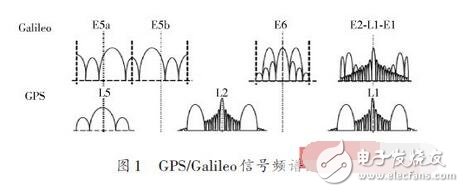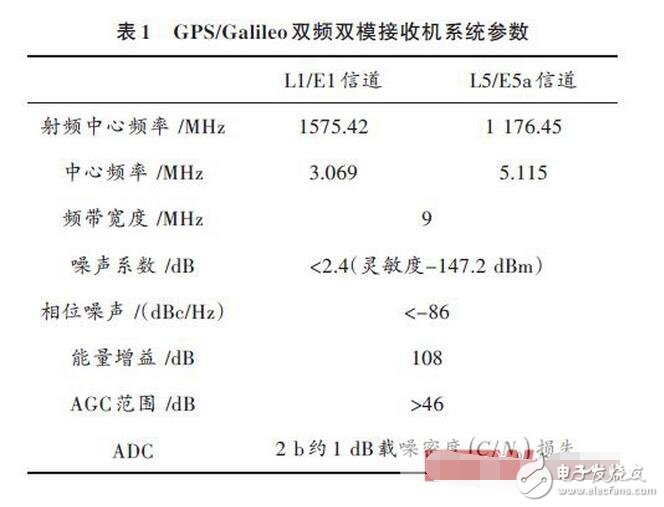Modern RF instruments have evolved from simple measurement equipment to an important system design tool. This development has benefited from various technologies triggered by software-defined radio (SDR). The flexibility of software radio is revolutionizing the wireless communications industry and RF test equipment.
In the late 1980s,? ? Engineers began experimenting with software radio ideas. In the past, radios relied on complex analog circuits to transmit and receive RF and microwave signals and to encode and decode information signals. The original idea of ​​software radio was to use a general-purpose radio for signal transmission and reception while performing multiple physical layer functions (such as modulation and demodulation) in software.
Walter H.W. Tuttlebee wrote in his article SoftwareDefined Radio: Origins, Drivers and InternaTIonal PerspecTIves: Some of the first typical applications of software radio include military radiocommunication projects, such as the SPEAKeasy project in the early 1990s. In the design of the project, the radio provides interoperability between various wireless interfaces by developing many modulation and demodulation functions in the software.
However, by the end of the 1990s, engineers began to actively study the application of software radio technology in commercial systems, such as cellular base stations. One of the most influential papers describing the growing demand for software radio is Dr. Joseph Mitola III, published in 1993 at IEEE Spectrum's Software Radios: Survey, CriTIcal EvaluaTIon and Future Directions. Dr. Mitola is also known as the "father of software radio" because of his extensive research.
Perhaps the best advantage of the software radio approach is the modern base station. As wireless standards evolve from GSM to LTE, it is becoming increasingly difficult to increase support for new standards through hardware. In addition, the base station performs signal processing and closed-loop control through sophisticated and constantly updated software. For example, power amplifier (PA) linearization techniques, such as digital pre-distortion (DPD), are critical to the performance of a base station and evolve over time. Thus, software radio base station design and methods to be ideal for long-term supportive maintained.
Fundamental change in the instrument
At the same time, software radio architectures are increasingly being used in the wireless industry, and RF test and measurement equipment is undergoing a major turn. At the beginning of the 21st century, the advent of the new wireless standard required the instrument to provide a richer measurement function, which also required a more flexible architecture. Since this requires a large number of RF measurement engineers to implement, the practice of designing instruments specifically for a few applications has become impractical. As a result, test vendors began to explore the concept of software-defined RF test equipment.
The development of traditional swept-tuned spectrum analyzers is one of the most typical examples of the transition from industry to software-defined instrumentation. In traditional spectrum analyzers, functions such as resolution bandwidth filtering and power detection are implemented based on analog components. However, today's modern RF signal analyzers generate digital I/Q samples by integrating a common RF downconverter (radio). The instrument is capable of processing I/Q sampled data using a variety of methods such as spectrum calculation. Thus, the same signal analyzer that may be used to perform spectral measurements can also be used to decode RADAR pulses, demodulate LTE signals, or even wirelessly record GPS signals.
Today, test vendors have further refined their RF instrument architecture to move closer to the software radio architecture. The basic architecture of the new generation of RF instruments combines not only general-purpose radios but also a wide range of PC and signal processing technologies such as multi-core CPUs and FPGAs. Today, software radios for RF test equipment offer significant advantages for traditional RF test applications, while also helping engineers implement applications that were previously impossible to implement with RF instruments.
The impact of Moore's Law on RF testing
The ever-increasing signal processing performance of the instrument is one of the most obvious advantages of integrating PC technology into RF instruments. Moore's Law predicts that the processing power of the CPU will continue to increase, which means that the processing performance of the instrument will continue to increase. As a result, PC-based instruments continue to accelerate as CPU manufacturers continue to update their processor technology. For example, a spectrum measurement that required 50 ms a decade ago can now be completed in just 5 ms.
In addition to the CPU, modern RF instruments are gradually integrating the core technology of modern software radios - FPGA. FPGAs have been used in RF instruments for more than a decade, and today's evolving trend is to make the instrument's FPGA user-programmable. User-programmable FPGAs extend the instrument's role from a single-function device to an infinitely flexible closed-loop control system.
With the advent of today's FPGA-enabled instruments, engineers can combine the real-time control capabilities of FPGAs with time-critical test functions. For example, in test applications that require device control via a digital interface, FPGA-enabled instruments can perform digital device control and RF measurements simultaneously. Based on the new test methods provided by user-programmable FPGAs, engineers have improved test times by a factor of 100.
Tools that support FPGAs have also driven tremendous innovation in FPGA programming. Although some engineers have been using hardware description languages ​​such as VHDL for many years, the complexity of FPGA programming has created obstacles for the widespread use of this technology.
Software Radio Drives FPGA Applications
Today, architectural elements like RF radios in RF instruments have blurred the boundaries between traditional instruments and embedded platforms. Defining instrument characteristics, such as user-programmable FPGAs, makes RF instruments increasingly popular for embedded applications.
Twenty years ago, it was unimaginable to assemble a prototype of a radar system by assembling a multi-million dollar RF signal generator and RF signal analyzer. Such systems are not only costly, large, but also complex programming experiences that make engineers daunting and reluctant to use instruments such as wireless communication devices.
Today, however, the smaller, more powerful PC-based instrumentation platform, such as PXI, is the ideal prototyping solution for electronic embedded systems. PC-based instruments not only meet the size and cost requirements of embedded systems, but also provide engineers with a good software experience to reconfigure RF instruments for a wide range of RF instruments. So engineers began using RF signal generators and analyzers to design embedded systems such as radars, channel simulators, GPS recorders, and DPD hardware.
The ability to use software to fully define and customize the behavior of RF instruments has become the key to solving the next generation of testing challenges. Therefore, future RF instrument architectures will become increasingly difficult to distinguish from software radio architectures.
Dual RF receiver working principle and design schemeThe Global Navigation Satel-lite System (GNSS) has been widely quoted in recent years, which has attracted great attention in related fields. Current receiver modes are unable to meet the increasing demand accuracy requirements. Therefore, the development of a higher-precision, more stable and durable dual-mode receiver based on the original single-mode receiver has become the core of research.
This paper presents a design scheme for a GPS/Galileo dual-band dual-mode receiver RF front-end system. This scheme combines existing resources to demonstrate an example of such a receiver design. The functions and implementation of the mixing part, the local oscillator part and the control part are analyzed. Finally, the system is tested by the spectrum analyzer and RF signal generator to verify the correctness of the system structure.
1 GPS/Galileo dual-mode dual-frequency receiver system 1.1 Receiver structure

The first consideration for designing a receiver is the choice of frequency bands. As shown in Figure 1, GPSL1/L5 and GalileoE1/E5a ​​have the same center frequency. If this band is selected, many components can be reused, which greatly reduces R&D and production costs, and also reduces the receiver. volume of.
The structure of the RF front end of the more popular dual-band dual-mode receiver generally has three types of signal exclusive channels, common channels, and only one carrier frequency signal in the channel at a certain time. Based on the third scheme, this design strives to maximize the reuse of components while minimizing signal interference. The structure diagram is shown in Figure 2.
1.2 Receiver system overall performance indicators

Based on the performance requirements of the reference receiver, the system indicators for designing the GPS receiver RF front-end chip are shown in Table 1.
Wireless Sweatproof Earphone Bluetooth Headphones Bone Conduction Headset IP55 Waterproof
.
Companies registered capital of 35 million yuan, the end of 2014 the total assets of 48.69 million yuan, including fixed assets of 37.52 million yuan. The cothan another low way, so that more particles to have less than the activation energy of the reaction kinetic energy, thus speeding up the reaction rate. Enzyme as a catalyst, in itself is not consumed during the reaction, it does not affect the chemical equilibrium reactions. Positive enzyme catalysis, but also a negative catalytic effect, not only to accelerate the reaction rate, but also to reduce the reaction rate. And other non-living catalysts is different, having a high degree of specificity of enzyme, only a catalytic reaction or produce a particular specific configuration.test
.
Companies registered capital of 35 million yuan, the end of 2014 the total assets of 48.69 million yuan, including fixed assets of 37.52 million yuan. The cothan another low way, so that more particles to have less than the activation energy of the reaction kinetic energy, thus speeding up the reaction rate. Enzyme as a catalyst, in itself is not consumed during the reaction, it does not affect the chemical equilibrium reactions. Positive enzyme catalysis, but also a negative catalytic effect, not only to accelerate the reaction rate, but also to reduce the reaction rate. And other non-living catalysts is different, having a high degree of specificity of enzyme, only a catalytic reaction or produce a particular specific configuration.test
Wireless Sweatproof Earphon
YIWU BEAUTYPLUS ART NAIL CO., LTD. , https://www.cn-gangdao.com
